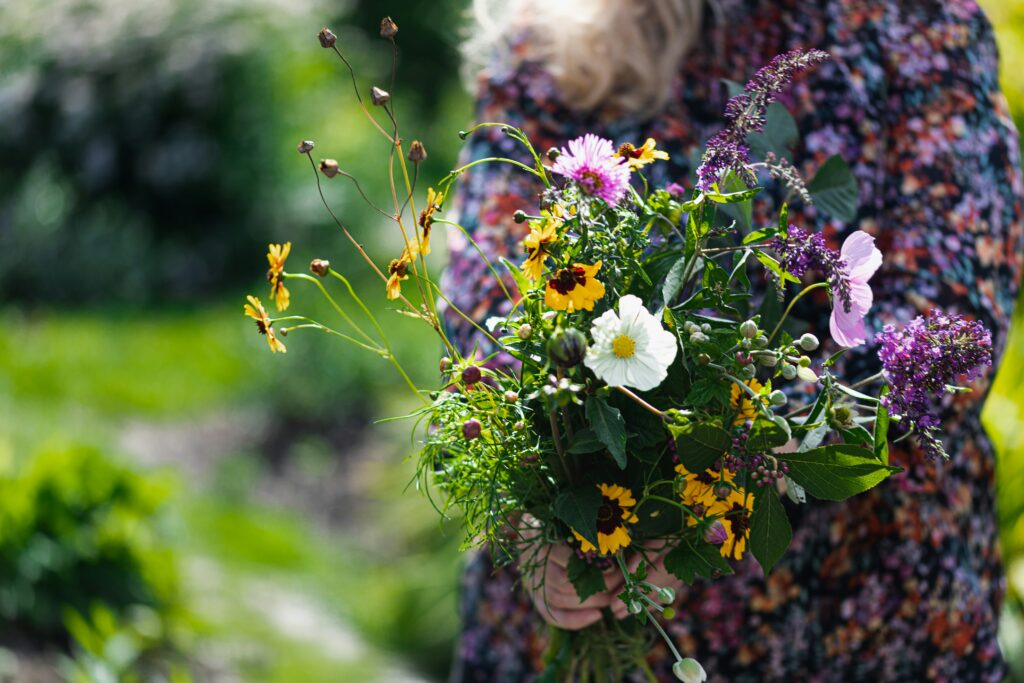Dried Flowers: How and Where to Procure
Unfortunately, not all flowers dry equal. Some dry beautifully, some can be finicky, while others should just not be attempted. In this post, we’ll review three areas to source for drying flowers: through foraging, from your very own garden and via local florists and markets. Gifted florals fall into this latter category too. While we’ll provide a few preferences, our lists are by no means all-encompassing. Instead, a good rule of thumb is to avoid very fleshy, dense flowers (ex., dahlias, peonies) or those that lose their petals in the aging process (ex., tulips, lilies).
Foraging
First rule of foraging: spend some time learning about your local flora and fauna. Mainly, have an idea if there are any plants that you should stay away from entirely. Like those that are poisonous or can create negative reactions. And secondly, an idea of what kind of plants you can expect to find in natural areas local to you. Often non-native plants and invasive weeds without exception should be ignored as the process of moving them in any stage could actually further disperse them.
Depending on the time of year, drying flowers can be found well on their way to being dry and in the prime of their blooms. We love sedges, grasses, shrubs and wildflowers like milkweed, blazing star, goldenrod, asters, vervain etc., (local to Southern Ontario in Canada).
Julie notes: Sometimes we will peruse local lists at nurseries and their likes of native plants, specifically those that are considered “drought-tolerant” as they tend to be excellent choices for drying.
Home-Grown Flowers
The best way to guarantee the exact flowers you’d like? Grow them yourself. A rewarding experience that often starts from seeds. And many a time this is because the options you have in seeds tend to be the most diverse. What we additionally like about growing your own drying flowers, is that you don’t need a massive garden or fancy outdoor set up. Some of our favourite flowers can easily be grown on smaller scales, in containers or in small boxes, throughout a season. Favourites include: strawflowers, hydrangeas, marigolds, zinnias, amaranths, floss flower, astilbe, baby’s breath, calendula, cornflower, yarrow, salvia and a crowd-pleaser, lavender. Once at the right stage, take measures to cut them well, then bring them in for drying.
Procuring
Purchasing from a local farmers market or florist is another wonderful option. Especially if you’re looking to get started with the drying process sooner rather than later. The rule of thumb, fresh is best. And organic is a good way to go as well, when you can. Because we aim to dry flowers in their prime, try to avoid very exotic florals as their transit times likely mean they may be getting past their prime. Instead, look for some of the species listed in previous sections. If you’re gifted with a bouquet that you want to preserve, a perfect time to start your first drying process. Funnily enough, many “filler plants” in classic bouquets like baby’s breath, eucalyptus, ruscus and oregonia to name a few.

In the next installment, we review all things on the art of drying. In the meantime we invite you to catch up on all things home, garden, and lifestyle on the Wild Blog. And, if you don’t already, be sure to follow us on Instagram and Pinterest.




